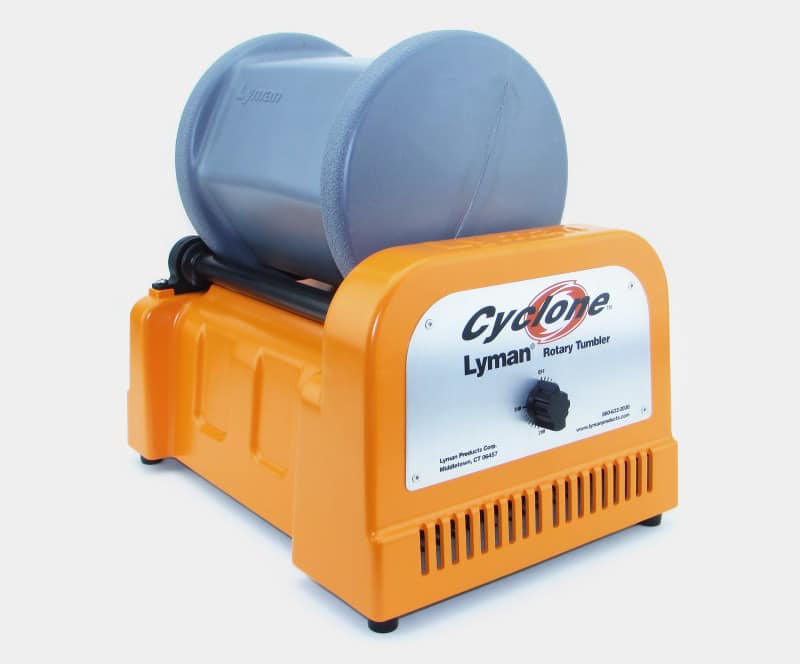Wet Tumbling Brass with the Lyman Cyclone
September 3rd, 2021
7 minute read
Wet tumbling brass is one of the latest things in the reloading world. With the right equipment and technique, you can return fired brass to its original, shiny self. The key, of course, is the right tools and methods.
In an effort to give my reloaded ammo a new look, I took the Lyman Cyclone Rotary Tumbler for a spin. This wet tumbler works with a special cleaning solution and small metal pins to restore your cases to a factory-fresh look.
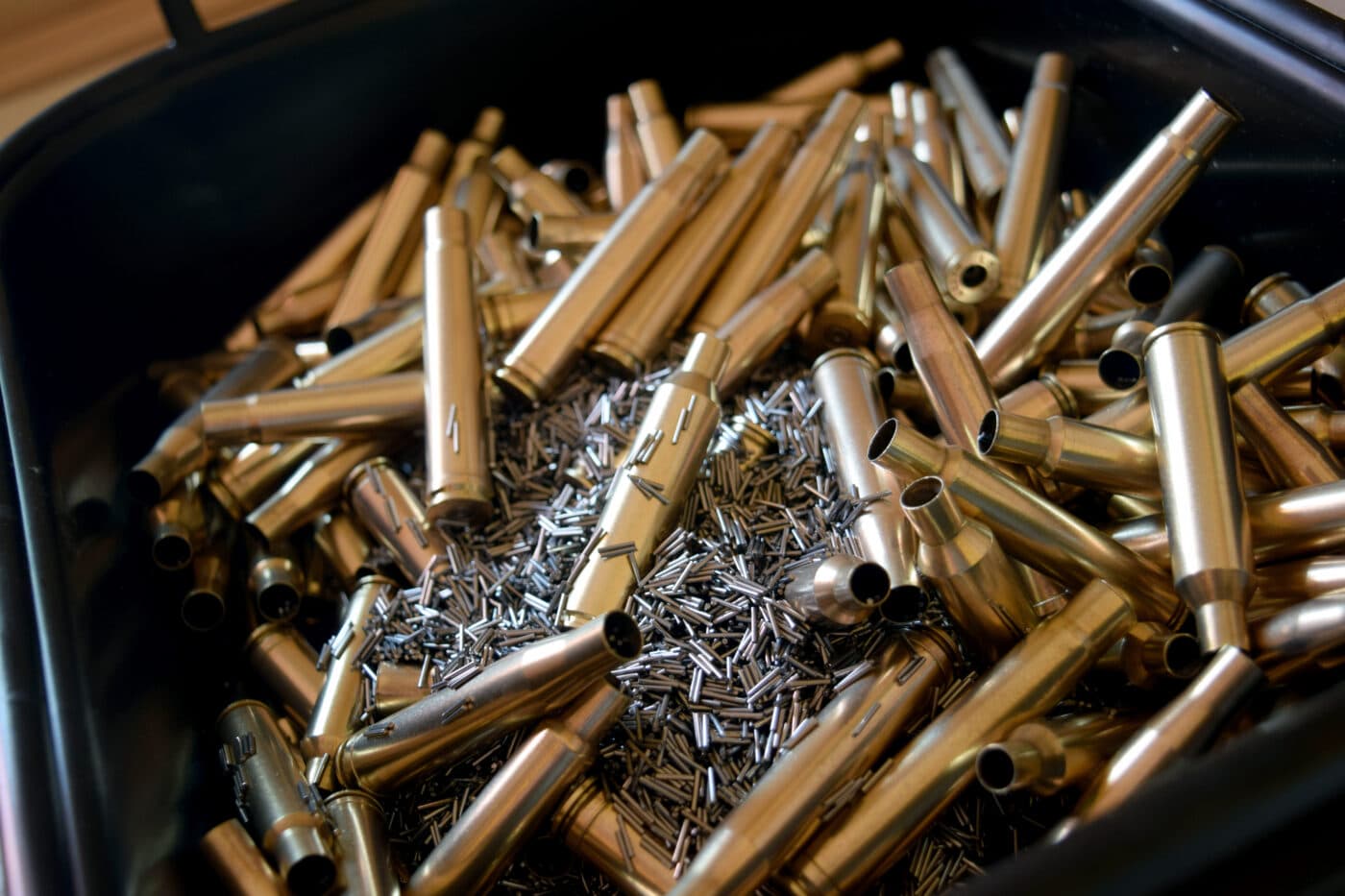
Cleaning Cases
The case is the only re-usable component of a centerfire cartridge. It is also the most expensive part of a load. Chamber dimensions are precise, so it is important that you correctly size re-used cases and clean the surface to ensure the reliable function in your firearm. With care, a single case can last for many loadings.
The best cases are made of brass and nickel-plated brass. That’s one of the reasons why you’ll hear cases referred to as “brass.”
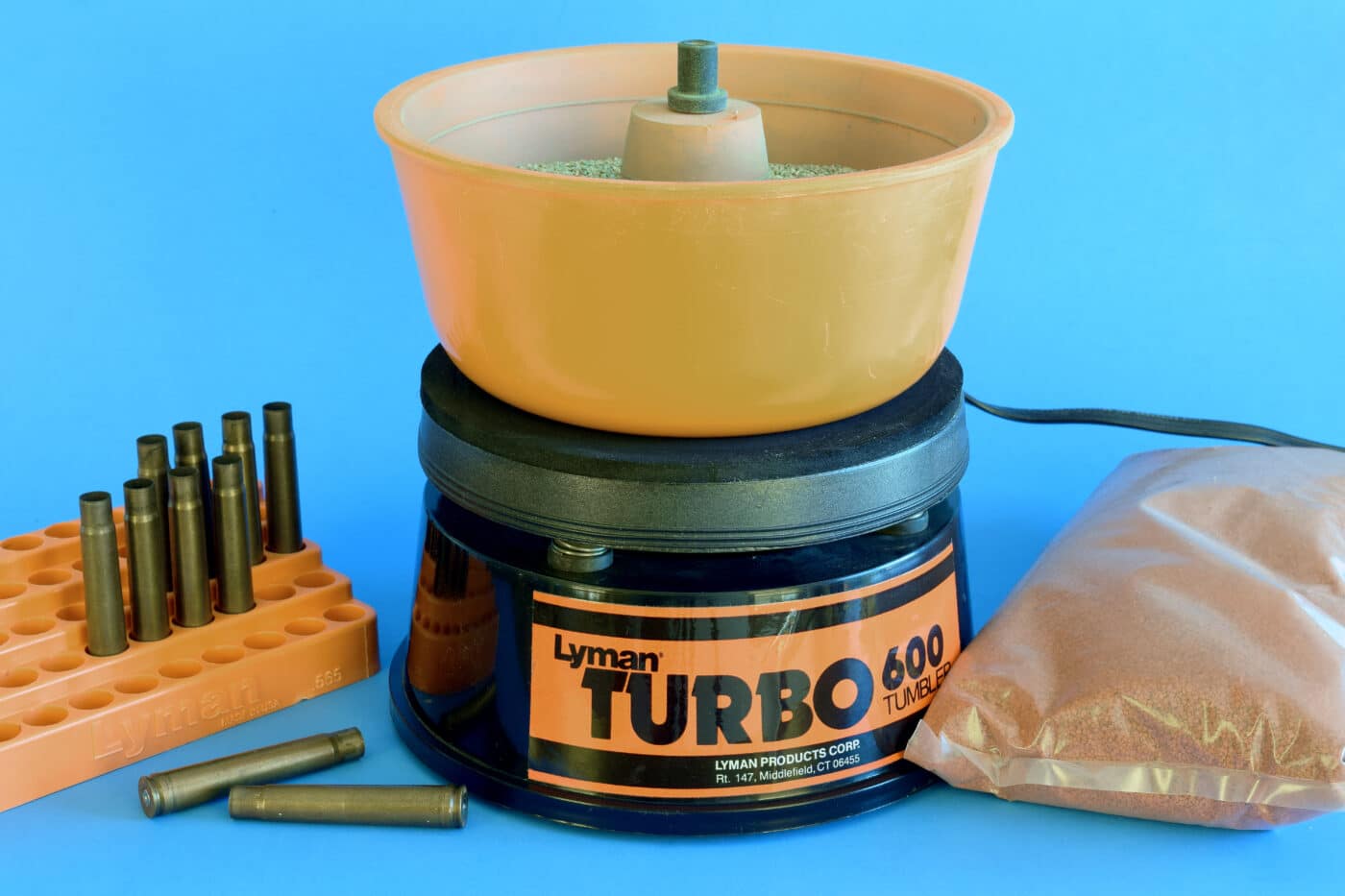
Brass cases are made of an alloy that is comprised of about 70 percent copper and 30 percent zinc. Cartridge brass is strong, ductile and corrosion-resistant. For comparison, the copper jackets on bullet jackets are typically made of gilding metal: roughly 95 percent copper and 5 percent zinc.)
Cleaning rids cases of surface dirt, which can scratch expensive reloading dies and cause feeding glitches. You should clean the inside of the case to remove powder and primer residue that can foul your barrel and impair ignition.
Traditional Cleaning Methods
Early on in my reloading career, the only cleaning my cases got was a quick wipe before lubing to re-size. That’s like running a dry rag over your sedan once a year.
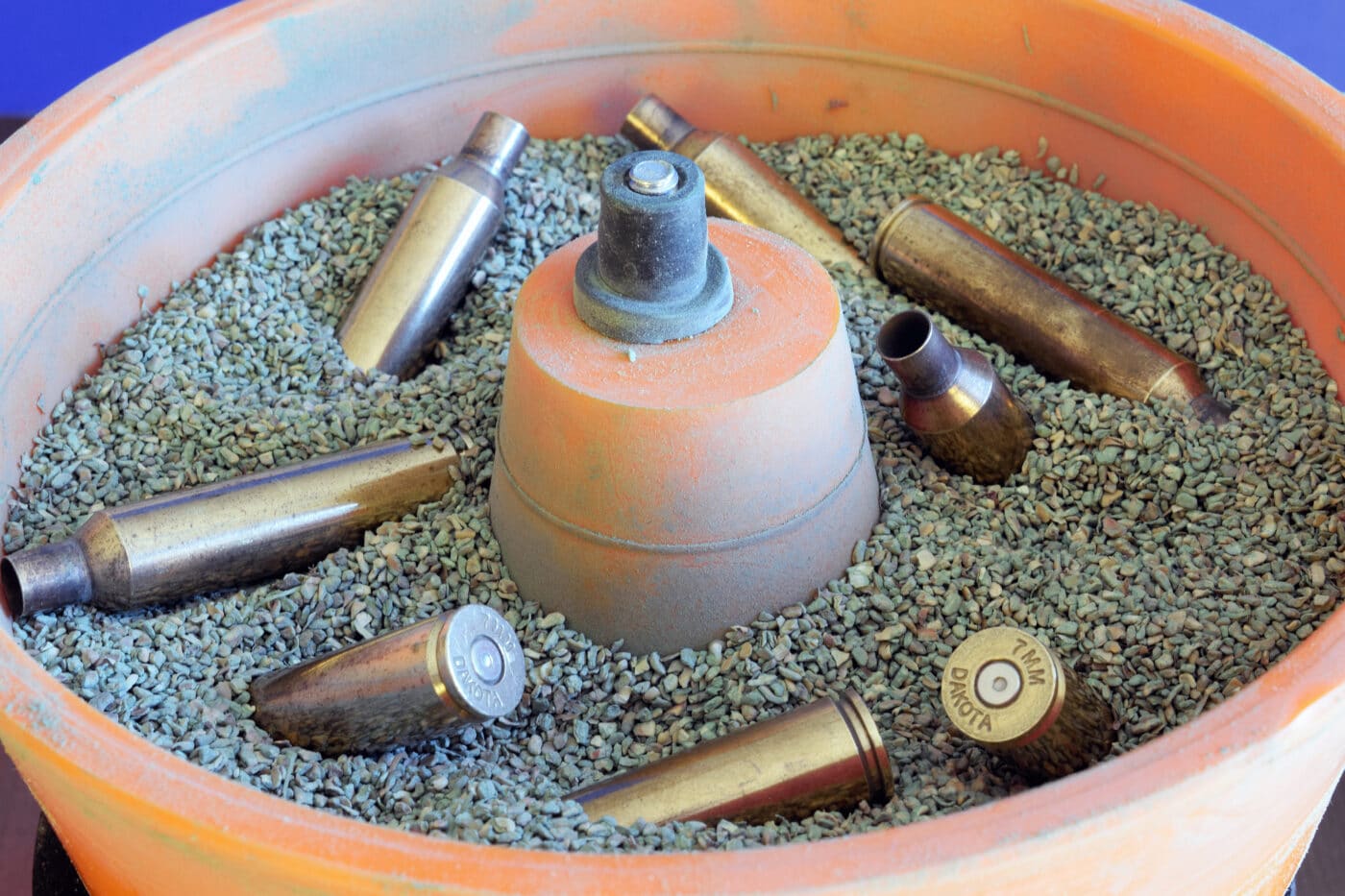
Later, I got a small Lyman 600 Turbo Tumbler and a bag of crushed walnut shells. After a couple of hours in the vibrating tub, a box of aging ’06 cases emerged with a dull glow. But they didn’t sparkle. This was a perfectly fine way of cleaning the brass for use, but it didn’t give them that “new from the store” look.
What the untreated bits of walnut shells failed to remove was the patina of age – oxidation that over time turns copper greenish-brown. This discoloring is like bluing on steel. It’s a surface reaction that can prevent further, more damaging corrosion.
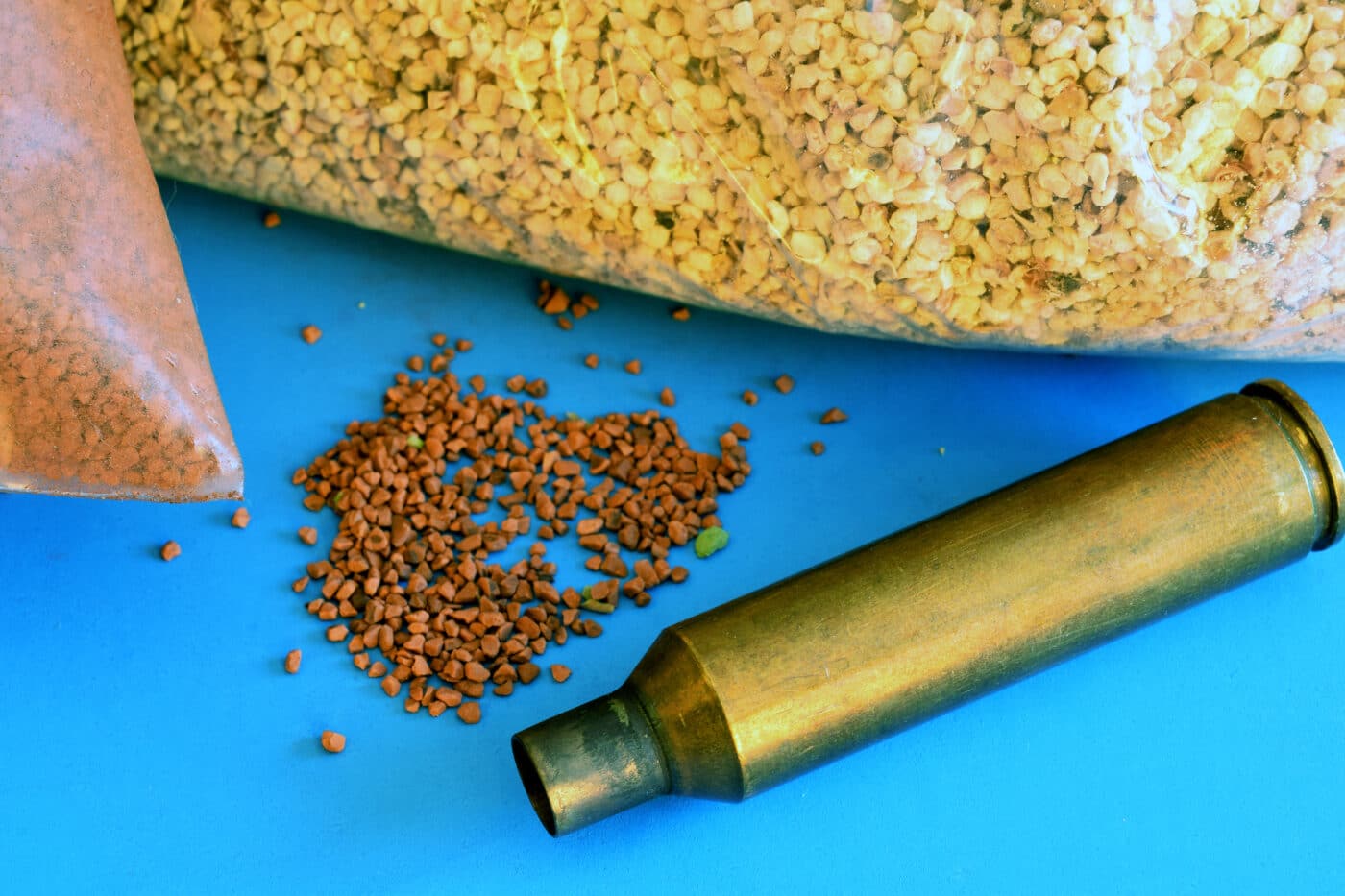
A blue-green hue, such as on the Statue of Liberty, coats copper alloys after long exposure to saltwater and weather. It’s called verdigris, from the modern French vert de gris, meaning “green of grey.” You’ll see it on cartridge cases stored in leather belt loops. Residue from tanning encourages verdigris.
In general, discoloration does not harm the case. Cases dark with age can perform like new.
Wet Cleaning Brass
As an alternative to dry tumbling, wet tumbling brass can provide you with shiny cases you’ll want to show off on your next trip.
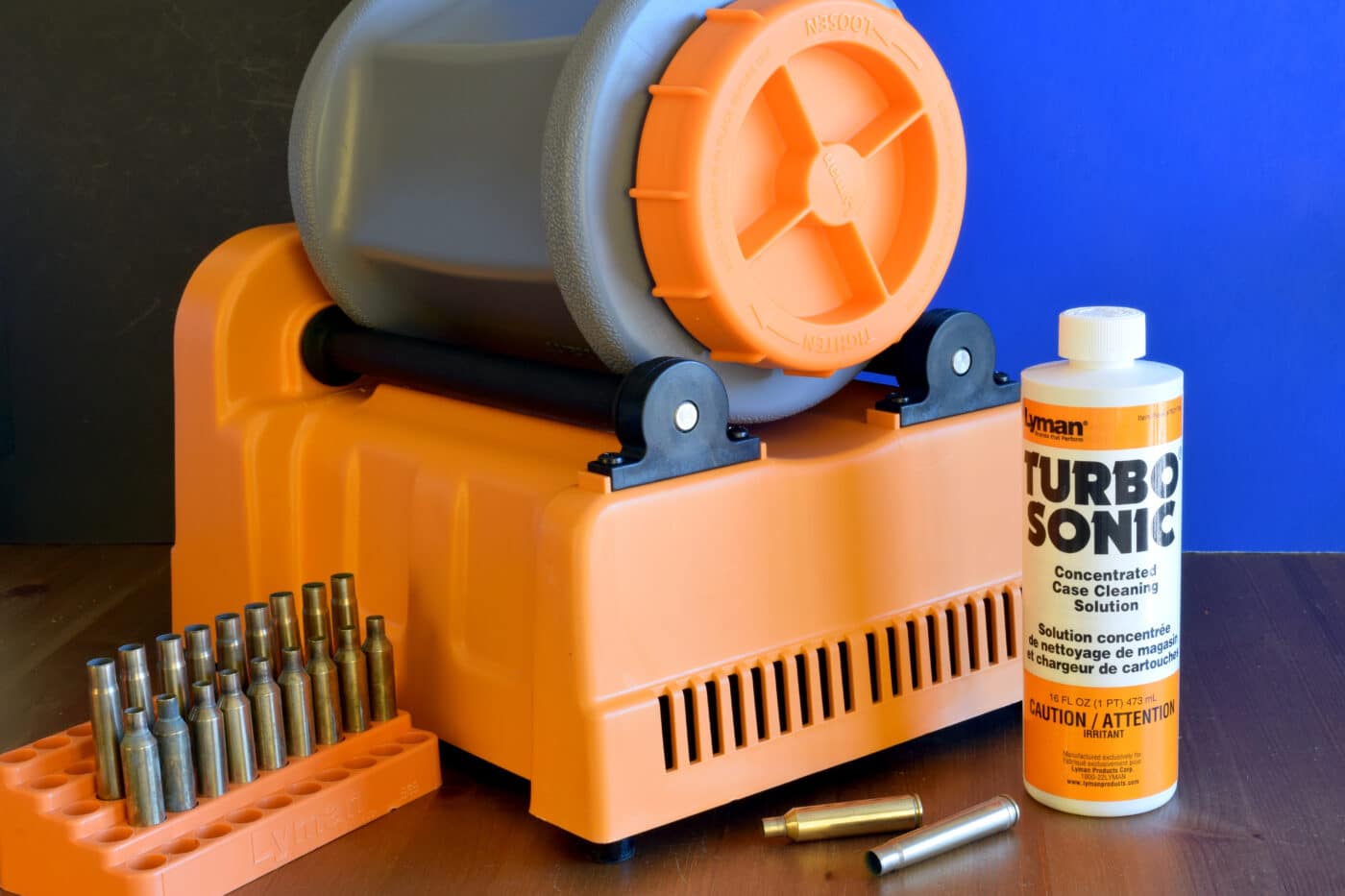
In theory, you don’t need to invest in a wet tumbler as kitchen remedies for brightening cases abound. They don’t work as well as a dedicated wet tumbling system, but you may want to give them a try.
For example, catsup is said by some to work well in some wet tumbling brass recipes. Other people claim a paste of lemon juice and baking soda performs well while others prefer a paste made of equal parts salt, vinegar and flour. An hour after applying the paste of your choice, wash off these acid plasters with warm, soapy water.
A quicker, less messy option: wipe cases liberally with WD-40, let stand 20 minutes and polish off. Not that you’d want to rub a case hard enough and long enough with WD-40 to find its brilliance.
The Lyman Cyclone Wet Tumbler
I elected to skip the home recipes and go straight to a proven method of wet tumbling. For this, I went to Lyman – a company well known for quality products in the reloading market.
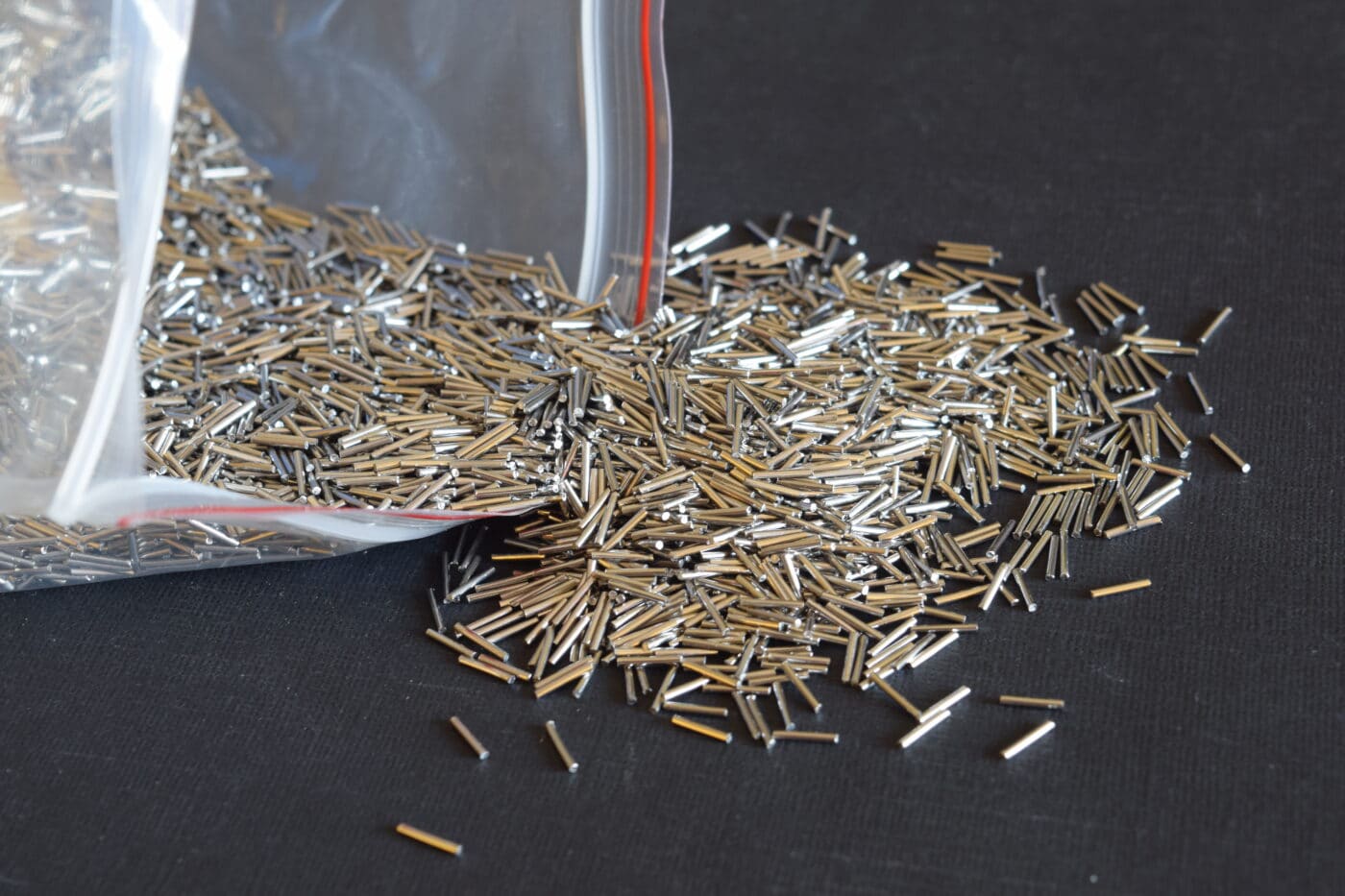
I selected the Lyman Cyclone Rotary Tumbler for “wet-cleaning” cases. This is not a standard vibratory cleaning system that you might use with a dry polishing system.
Instead, the Lyman Cyclone comprises a base with two rollers that support a polymer drum. A 110v motor on a timer drives the rollers, rotating the drum. The drum works best, says Lyman, half-full of brass with just enough water to cover, and an ounce of its Turbo Sonic case cleaning solution. Plus the pins.
Pins? Instead of walnut-hull or corn cob polishing media, the Cyclone Rotary Tumbler uses tiny steel pins roughly .3 inch long as the brass tumbler media. The stainless steel media has no head and no point that might damage the brass. Five pounds is the recommended maximum drum-load size.
How to Wet Clean Cases with the Lyman
Lyman suggests two ways to clean cases. The first is to tumble fresh-fired cases for 15 minutes in water and solution (no pins; they can’t scour primer pockets until you de-prime!). Re-size. Another, more thorough tumble with water, solution and pins, should yield new-looking brass in less than an hour.
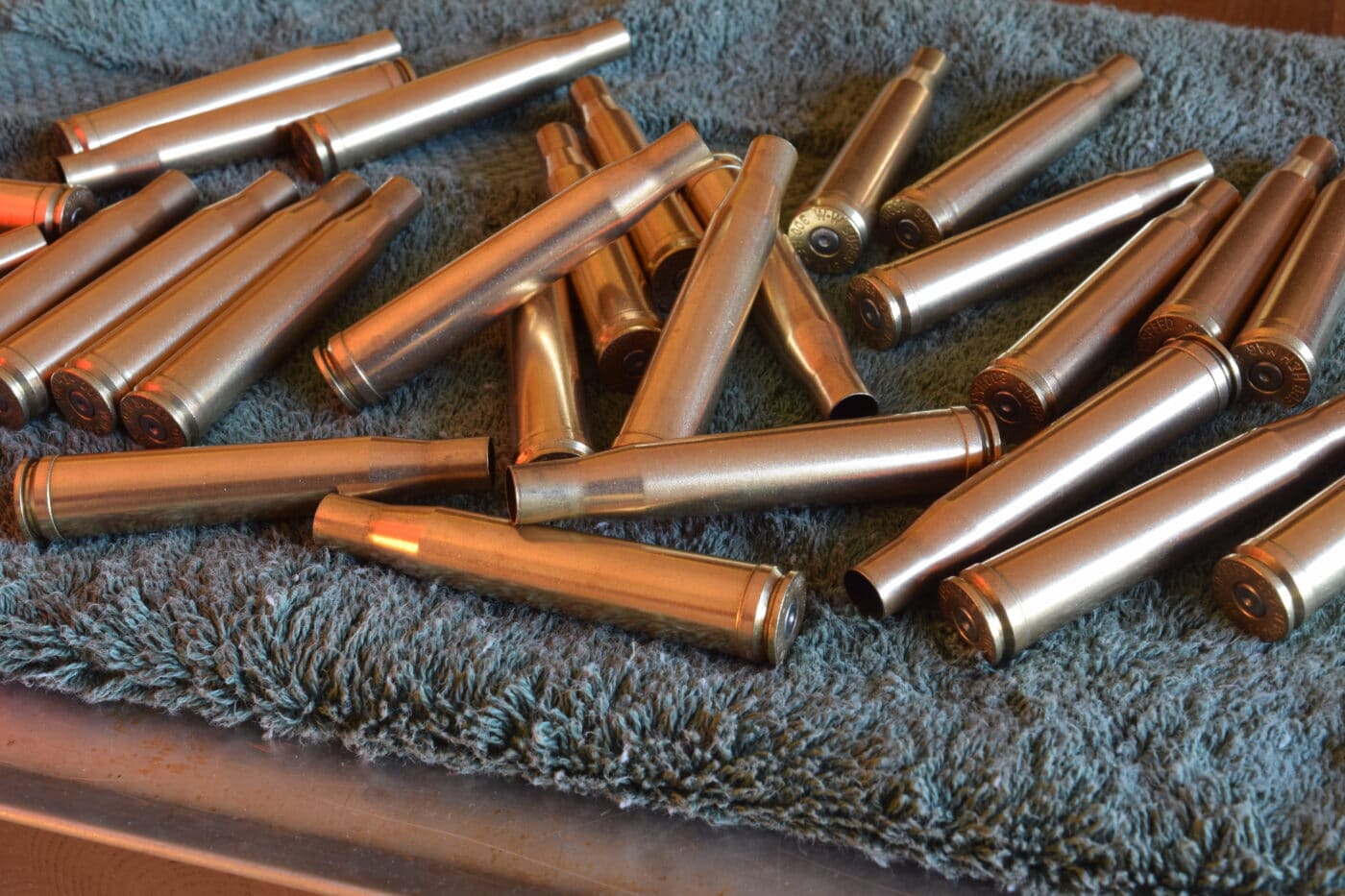
An alternative: Skip the 15-minute pre-wash. Re-size, then tumble in the water solution with pins. Allow a few more minutes than if this were a second tumbling. But you’ll save more time than you might think, as pre-washed cases must be dried before sizing. The advantage of the pre-wash: it removes debris that can damage dies, and makes sizing easier.
To pre-clean but avoid drying cases twice, why not dry-tumble first, then wet-tumble after sizing?
How Did It Perform?
For this pre-clean exercise, I emptied a box each of dark, fired 7mm Dakota and .375 H&H cases into the modest tub of my Lyman Turbo Tumbler. After a 40-minute shake in untreated corn cob media, they had a fresh glow but no shine.
For samples of other sizes and profiles, I dredged up 6.5 Redding (think, .260 Remington), .30-06 Improved, and .300 H&H cases. These got no pre-cleaning. I re-sized the 6.5 and ’06 cases. After wiping off sizing lube, I added this brass to the 7mm Dakota and .375 hulls.
Upending the Cyclone Rotary Tumbler drum, I began filling it. Most of the cases were magnums, so I expected to run two batches. But after loading all, plus 5 lbs. of pins and water and Turbo Sonic solution to cover, the drum was only half-full – just what Lyman recommended for best cleaning results! Tightening the lids on the rubber gasket, I laid the drum on its drive wheels, set the timer for an hour and left the drum spinning like a hamster cage.
Unsure at how long I needed to tumble the brass, I checked on it after 50 minutes. I expected it would need another 50. To my surprise, the cases looked like new!
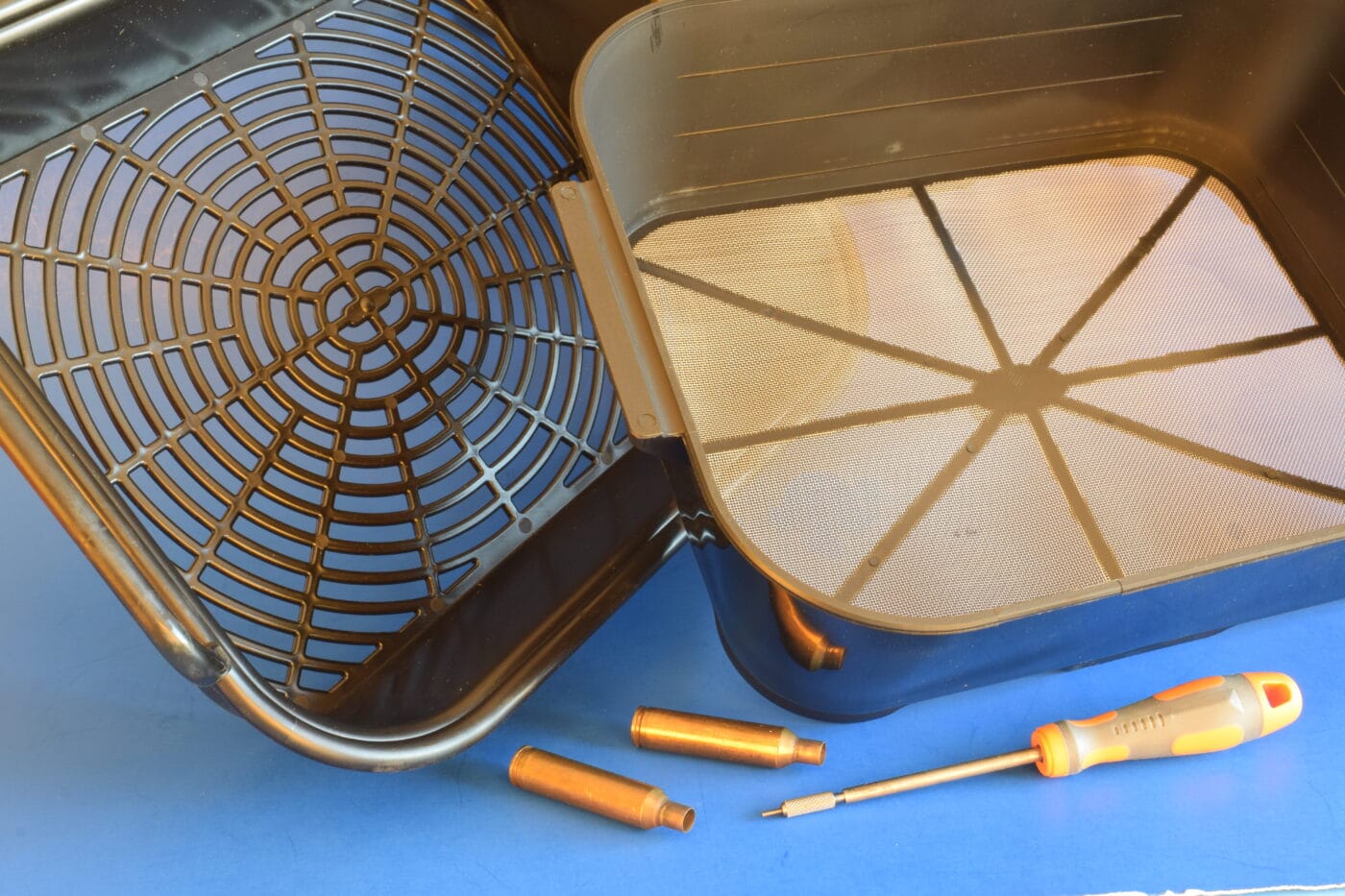
I removed the drum and emptied it over the Cyclone kit’s two polymer screens. The first caught the cases; the second caught the pins. Rinses of warm water cleaned the drum and released pins clinging inside the cases. Just one pin had to be dislodged with a pick. It was bridged in the neck of a 6.5 Redding case. I shook the brass dry and spread it on towels. Ditto the pins. An hour later, both went onto baking sheets and into an oven, on “low.”
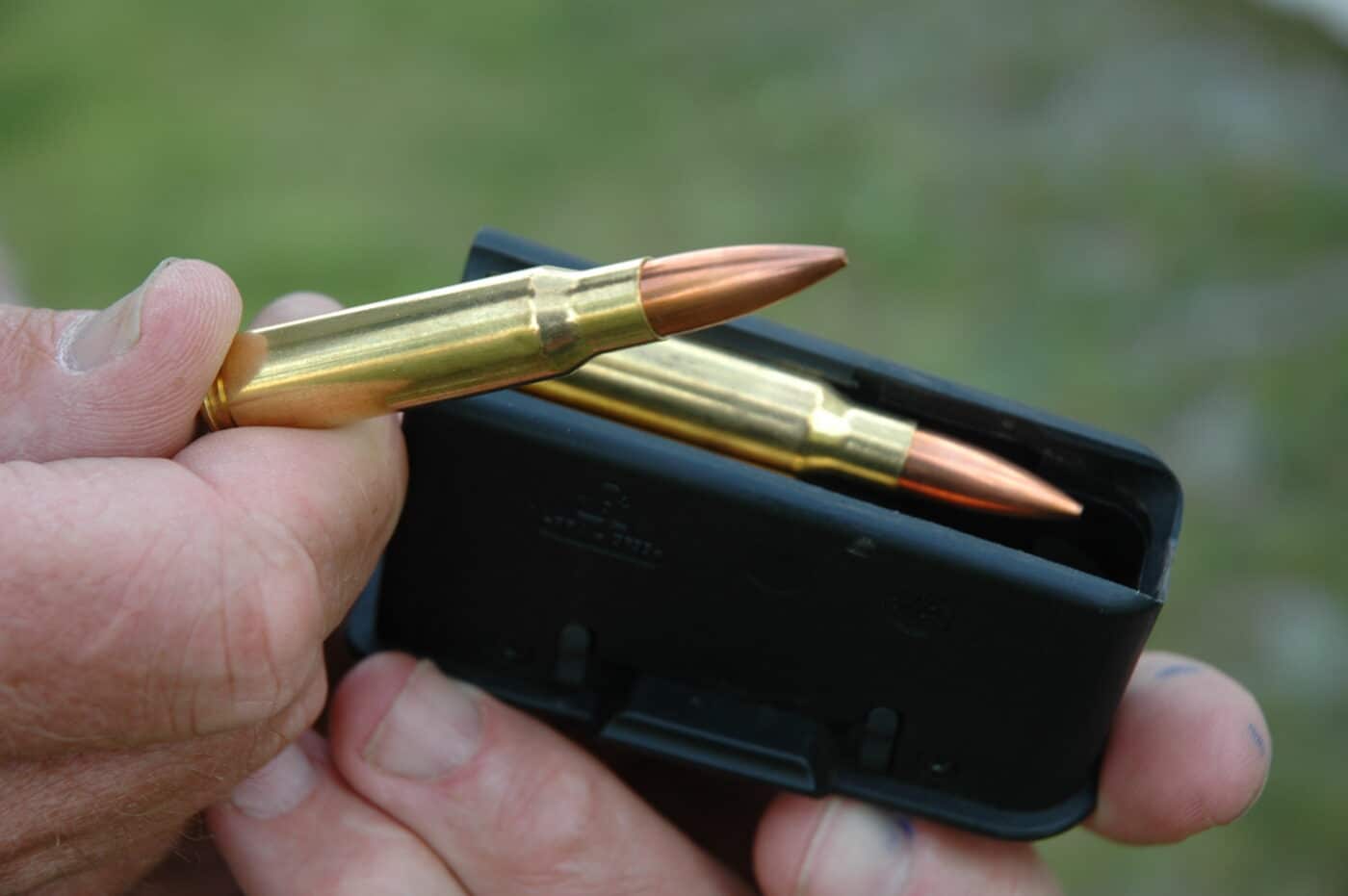
“Use distilled water; it’ll prevent spotting,” a colleague had advised when sharing a wet tumbling brass recipe. My tap water was kind to the cases, as they did not spot. With an inexpensive Lyman tool, I checked that flash-holes of de-primed cases were clear.
Dry-tumbled cases came out of the Cyclone Rotary Tumbler looking the same as those with no prep. While treated media (jeweler’s rouge in walnut-shell bits, for example) polishes faster and yields a brighter surface than the untreated corn cob and walnut I’ve used, it probably wouldn’t make a noticeable difference in a pre-scrub. It’s a worthwhile step if cases are gritty. I keep brass out of the dirt, so the main debris is powder and primer residue.
Conclusion
Wet tumbling brass strikes me as the most efficient way to retrieve their original brilliance. Lyman’s Cyclone wet tumbler with stainless pins in cleaning solution gave me dazzling results in less than an hour.
The drum’s great capacity – eight boxes of large rifle cases per batch – is hard to match with a dry tumbler, though Lyman and other manufacturers offer bigger bowls than that on my old 600 Turbo.
I have the wrinkles out of the drying routine and know where Alice keeps her cookie sheets. Meanwhile, the catsup and WD-40 can relax.
Editor’s Note: Please be sure to check out The Armory Life Forum, where you can comment about our daily articles, as well as just talk guns and gear. Click the “Go To Forum Thread” link below to jump in and discuss this article and much more!
Join the Discussion
Featured in this article
Continue Reading
Did you enjoy this article?

 28
28




